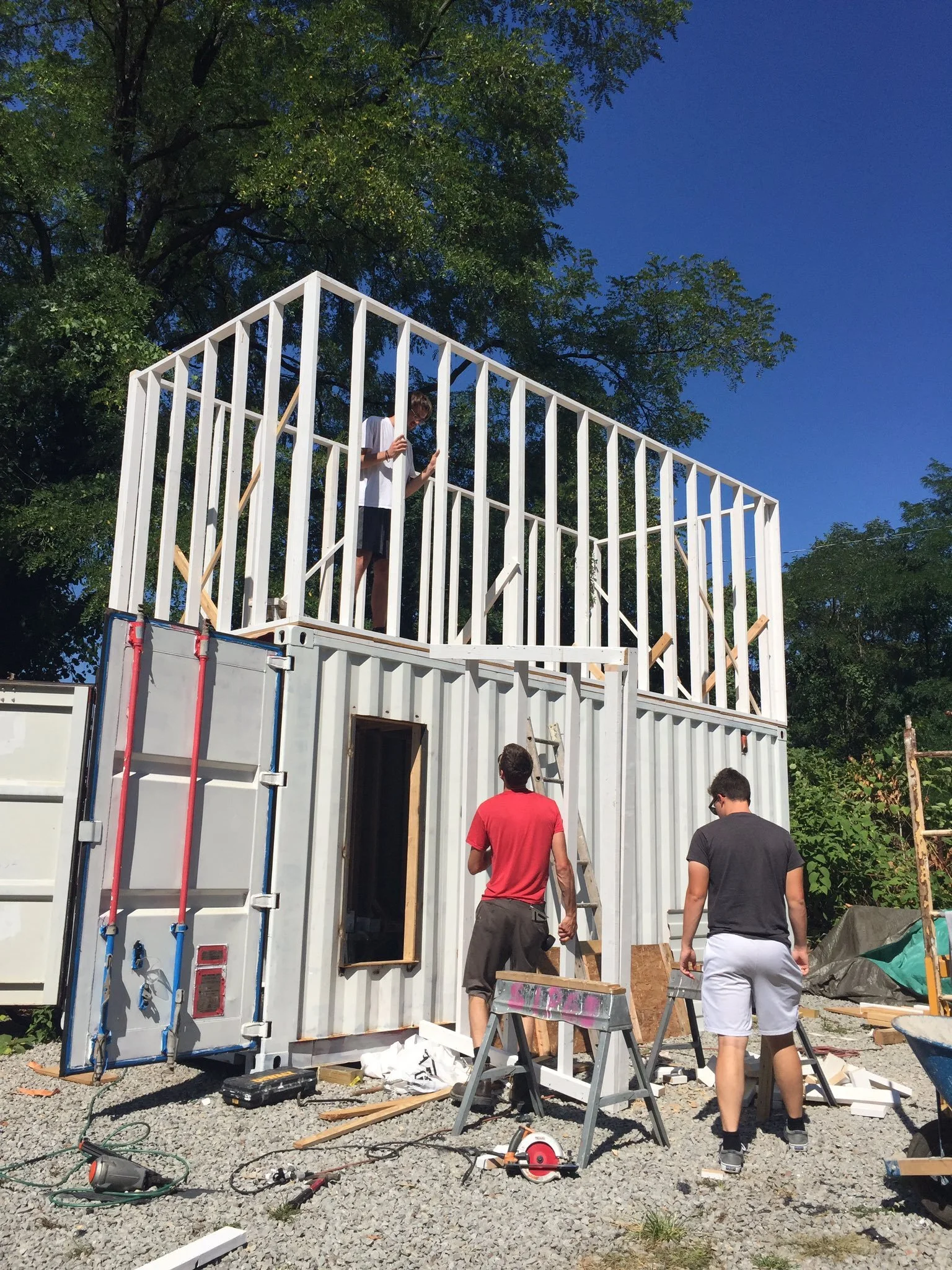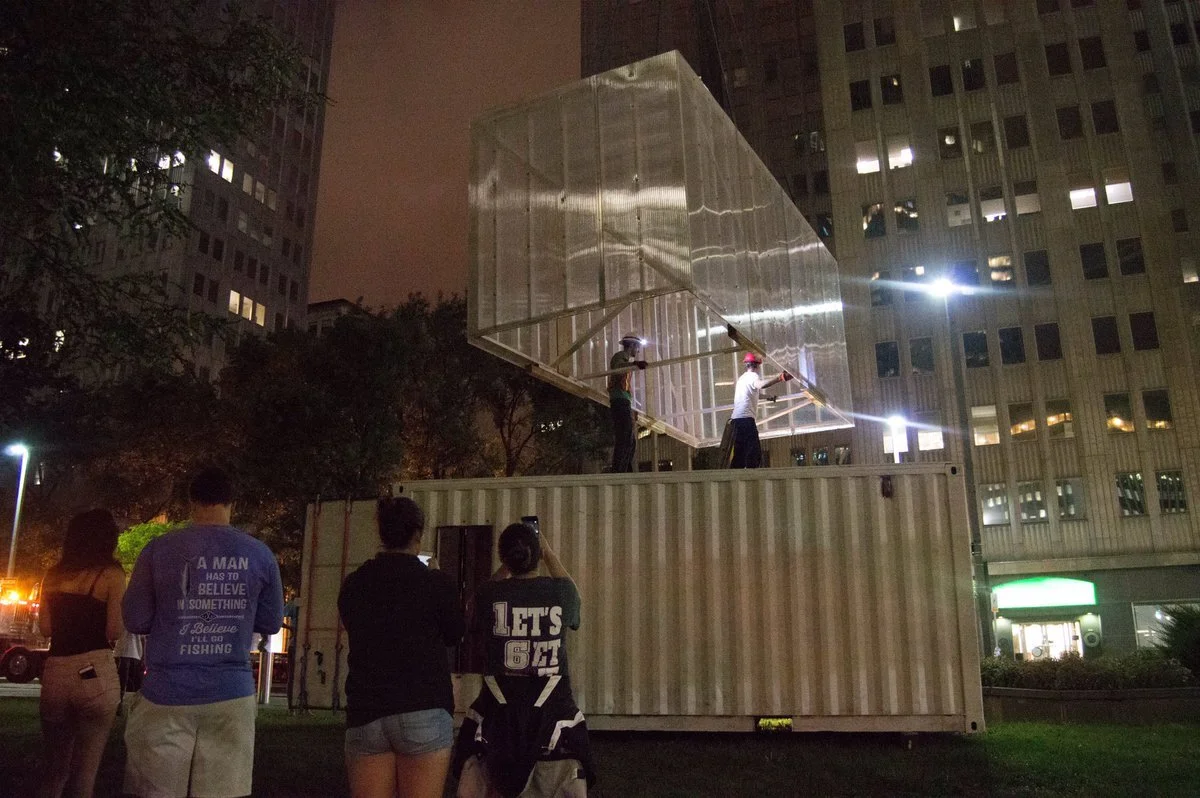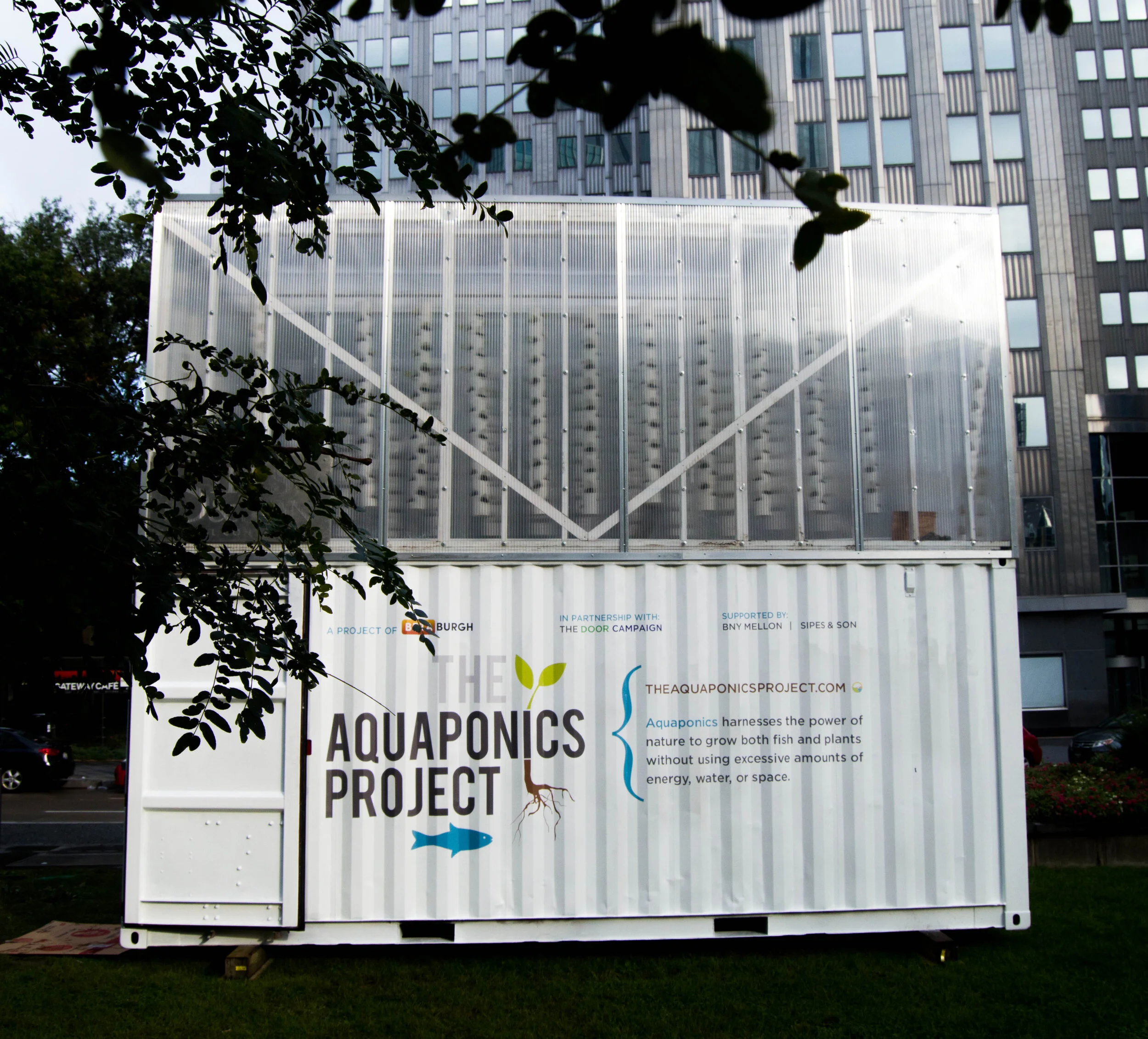In my freshman year of college I founded The Aquaponics Project, a startup looking to reinvent the food system and how we interact with it. The company has been an immense learning experience allowing me to wear many hats from recruiter and fundraiser to product designer and leader.
Within our first year, I raised over $50,000, designed, built, and deployed the country’s first portable aquaponics farm, bringing food literacy and over 1000 pounds of fresh produce to food insecure communities each month.
Design Challenge
23.5M Americans are food insecure, while 40% of all food produced is wasted. How can we make fresh food more accessible and also educate communities about sustainable and healthy food practices?
BACKGROUND
Moving to Pittsburgh, I noticed that many neighborhoods were food deserts with minimal to no access to fresh food. Gas stations and convenience stores were abundant, but grocery stores were far and few between. I remember watching as an elderly woman took public transit for nearly an hour through several neighborhoods only to finally drag her heavy grocery bags off and wait for another.
Believing that there had to be a better alternative, I assembled a group of students and began to explore solutions and ideas. I interviewed industry experts, farmers, hobbyists, and residents to learn about the problems and see firsthand the challenges and solutions that had been cropping up in various communities.
At the end of it all, I took my insights, condensed them into design requirements, and reimagined a solution. On a whim, I decided to pitch the idea to the city. Little did I know that pitch would secure me my first round of seed funding. Eight months later, I’d be directing a 200 ft. crane to deploy the country’s first portable aquaponics farm, bringing food literacy and sustainable, fresh produce to the local community.
USER RESEARCH & CUSTOMER DISCOVERY
NEIGHBORHOOD RESIDENTS (30+)
RESTAURANTEURS/CHEFS (8)
LOCAL NONPROFITS (5)
o “ I could travel far to get better food, but I’m busy and sometimes it’s just easier to get something quick.”
o “There’s a Whole Foods about 5 minutes away, but it’s too expensive for me to shop at.”
o “It’s not possible to grow food around here, it’s winter for more than half the year.”
o “For me it’s all about price, I don’t care about the label, brand, or certification.”
o “What’s aquaphonics and hydrophonics? Is that like.. water sounds in a bath?”
o “Organic is nice, but if we know where it comes from and have a relationship with the grower, that trust is better than the organic label.”
o “We try to source locally where we can. It’s really important to us.”
o “We strive to keep food costs below 25%.”
o “There have been several urban farms launched, but the harsh weather and limited space don’t allow the finances to pan out.”
o “There is a gap between consumer desire and seasonality— we’re used to getting what we want when we want it.”
o “The city is unique since we have such a large population of nonprofits invested in food and agriculture.”
o “Most people don’t think about where their food comes from, we’ve become so disconnected from our food system.”
THE BOLD IDEA
What if we designed a system that could be deployed anywhere and produce fresh, sustainable food for the local community?
DESIGN REQUIREMENTS & GOALS
Portable infrastructure: the design needed to provide agricultural infrastructure but also be easily transportable and deployable in urban areas.
Financially Functional: the system needed to not only produce food, but also enough food to cover operational costs in addition.
Structurally Resilient: can withstand winters, heavy weathering, and the scrutiny of city inspectors.
Educational & Welcoming: community members need to understand new ideas and concepts in order to believe in them and feel comfortable welcoming them into their neighborhood.
PRELIMINARY DESIGNS & Justification
Throughout the design process, I constantly thought back upon the community members and key stakeholders I spoke to in order to influence the decisions I made:
Aquaponics shifts the economics – a flexible alternative agriculture practice that allows for the production of both fresh fish and produce. The flexibility and low energy of the system allows for 80% less energy usage and 90% less water usage than traditional agriculture.
Leverage existing infrastructure – shipping containers are affordable, easily transportable, and resilient.
Two-tier – urban areas are dense, so go vertical! I designed a collapsible greenhouse on top of the shipping container. The greenhouse capitalizes on height capturing more sunlight and retaining more heat throughout the day.
Small footprint, big (educational) surface area – the design has a footprint of only 160 sq. ft. not much larger than the footprint of a dumpster, but the space available on the outer walls of the container served as a canvas for educational material.
Windows make it a home - shipping containers look cold and uninviting, but incorporating windows into the design actually make people feel more comfortable approaching it to look and walk inside. Vertical windows still satisfy the previous statement, but also does not impede structural integrity nearly as much as horizontal.


















